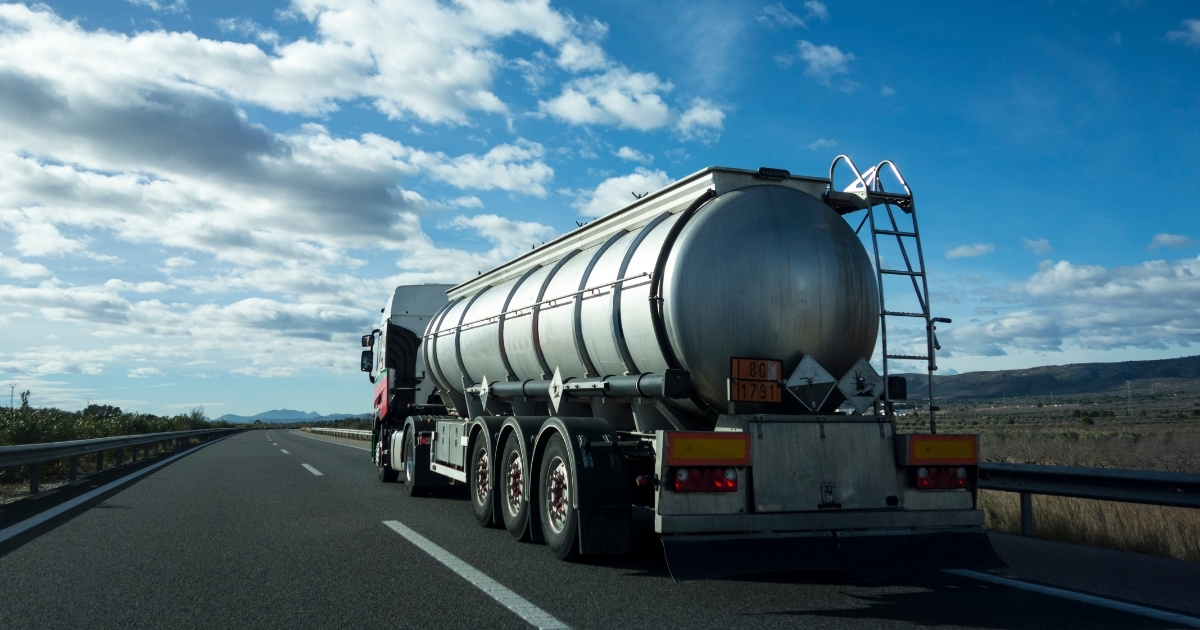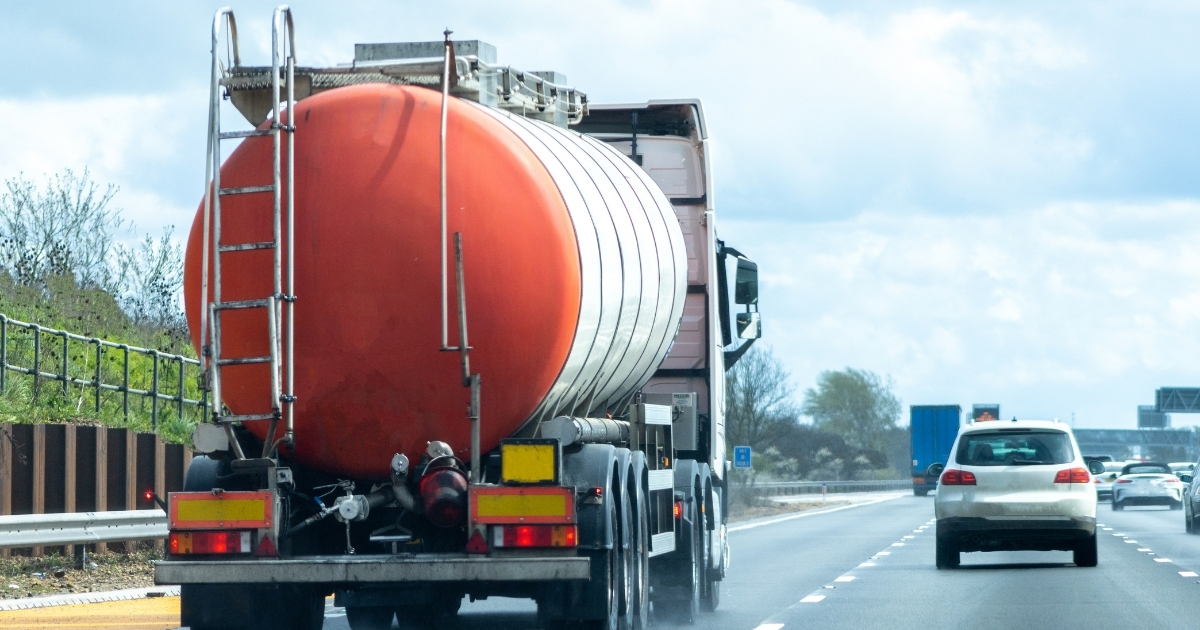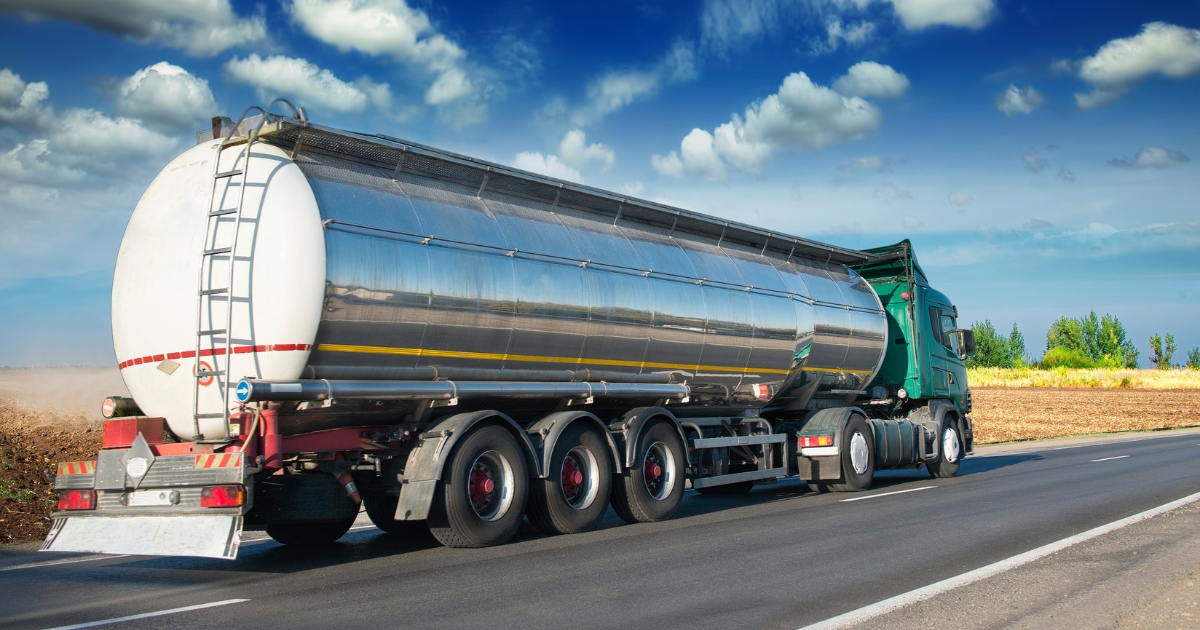A food tanker is a specialized vehicle designed for the transportation of liquid food products. These tankers are essential for moving large quantities of consumable liquids, such as milk, juice, and oils, from production facilities to processing plants or retail outlets. The primary purpose of a food tanker is to ensure that these products are transported safely and efficiently, maintaining their quality and freshness throughout the journey.

What is a Food Tanker?
Optimize Efficiency and Reduce Costs on All Your Shipping Needs
Types of Food-Grade Tanks
Food-grade tanks come in various types, each suited for different kinds of liquid food products. Stainless steel tanks are commonly used due to their durability and resistance to corrosion, making them ideal for transporting acidic liquids like fruit juices. Additionally, there are insulated tanks that help maintain the temperature of the contents, crucial for products like milk that require constant cooling. Some tanks are also equipped with compartments to transport different liquids simultaneously without cross-contamination.

Our Achievements:
Food Tanker Capacity and Specifications
Average Liquid Capacity
The capacity of food tankers varies depending on their design and purpose. On average, a standard food tanker can hold between 5,000 to 8,000 gallons of liquid. This capacity allows for the efficient transportation of bulk quantities, reducing the number of trips needed and thus lowering transportation costs. The size of the tanker is often determined by the type of liquid being transported and the distance it needs to travel.
Tank Materials and Construction
The construction of food tankers is critical to ensuring the safety and quality of the transported products. Most food tankers are made from stainless steel due to its non-reactive nature, which prevents contamination of the food products. Additionally, the tanks are often lined with food-grade materials to further protect the contents. The design also includes features like smooth interiors to facilitate easy cleaning and prevent residue buildup.
-
Stainless Steel Construction: Ensures non-reactivity and durability.
-
Food-Grade Linings: Protects against contamination.
-
Smooth Interiors: Aids in cleaning and maintenance.
Types of Food Transported in Tankers
Liquid Food Products
Food tankers are primarily used for transporting liquid food products. These include milk, juices, oils, and syrups, which require careful handling to maintain their quality. The tankers are equipped with temperature control systems to ensure that these products remain fresh and safe for consumption during transit.
Semi-Liquid and Viscous Foods
In addition to liquid foods, tankers also transport semi-liquid and viscous products like honey, molasses, and certain sauces. These products require specialized handling due to their thickness and potential for settling. Tankers used for these products often have agitators or heating systems to keep the contents in the desired state.
-
Milk and Juices: Require temperature control.
-
Oils and Syrups: Need careful handling to prevent spillage.
-
Honey and Molasses: Require agitation or heating systems.
Food Tanker Transportation Process
Loading and Unloading Procedures
The loading and unloading of food tankers are critical steps in the transportation process. These procedures must be carried out with precision to prevent contamination and ensure the safety of the food products. Loading typically involves pumping the liquid into the tanker through sanitized hoses, while unloading is done using gravity or pumps, depending on the product's viscosity.
Temperature Control Methods
Maintaining the correct temperature is vital for preserving the quality of liquid food products during transportation. Food tankers are equipped with advanced temperature control systems, including insulation and refrigeration units, to keep the contents at the desired temperature. This is especially important for perishable products like milk and certain juices.
-
Sanitized Hoses: Used for safe loading and unloading.
-
Refrigeration Units: Essential for perishable products.
-
Insulation: Helps maintain consistent temperature.
Safety and Regulations in Food Tanker Transport
FDA Guidelines for Food-Grade Tankers
The transportation of food products in tankers is subject to strict regulations to ensure safety and quality. The FDA provides guidelines that dictate the construction, maintenance, and operation of food-grade tankers. These guidelines are designed to prevent contamination and ensure that the food products remain safe for consumption.
Cleaning and Sanitization Protocols
Cleaning and sanitization are crucial aspects of food tanker operations. After each load, tankers must be thoroughly cleaned to prevent cross-contamination between different food products. This involves a combination of steam cleaning, chemical treatments, and air drying to ensure that the tank is free from any residues or contaminants.
-
FDA Guidelines: Ensure safety and quality.
-
Steam Cleaning: Effective for removing residues.
-
Chemical Treatments: Used for thorough sanitization.
Goods2load's Partners Food Tanker Solutions
Centralized Platform for Food Tanker Bookings
Goods2load offers a centralized platform for booking food tanker services, making it easier for businesses to find and schedule transportation for their liquid food products. This platform provides access to a wide network of food tanker operators, ensuring that businesses can find the right tanker for their specific needs.
Global Reach and Tailored Services
With a global reach, Goods2load provides tailored services to meet the unique requirements of each client. Whether it's transporting milk across the country or shipping juice internationally, Goods2load offers solutions that are customized to ensure the safe and efficient delivery of food products.
-
Centralized Booking: Simplifies the process.
-
Wide Network: Access to numerous operators.
-
Tailored Solutions: Customized for client needs.
Innovations in Food Tanker Technology
Smart Temperature Monitoring Systems
Recent advancements in technology have led to the development of smart temperature monitoring systems for food tankers. These systems provide real-time data on the temperature of the contents, allowing operators to make adjustments as needed to maintain product quality. This innovation is particularly beneficial for perishable products that require strict temperature control.
Advanced Tank Materials for Better Insulation
Innovations in tank materials have also improved the insulation capabilities of food tankers. New materials offer better thermal resistance, reducing the need for additional cooling or heating and thus saving energy. These advancements help maintain the quality of the food products while also reducing operational costs.
-
Real-Time Data: Allows for immediate adjustments.
-
Improved Insulation: Reduces energy consumption.
-
Enhanced Product Quality: Maintains freshness and safety.
Challenges in Food Tanker Transportation
Maintaining Product Integrity
One of the primary challenges in food tanker transportation is maintaining the integrity of the products. This involves ensuring that the food remains uncontaminated and at the correct temperature throughout the journey. Any deviation can lead to spoilage or contamination, resulting in significant losses.
Compliance with International Food Safety Standards
Transporting food products across international borders requires compliance with various food safety standards. These standards vary by country and can be complex, making it challenging for operators to ensure compliance. Failure to meet these standards can result in delays, fines, or even the rejection of the shipment.
-
Product Integrity: Essential for preventing spoilage.
-
International Standards: Vary by country and are complex.
-
Compliance: Necessary to avoid delays and fines.
Cost Considerations for Food Tanker Transport
Factors Affecting Pricing
Several factors influence the cost of food tanker transportation. These include the distance of the journey, the type of product being transported, and the specific requirements for temperature control. Additionally, market demand and fuel prices can also impact the overall cost.
Goods2load's Affordable Food Tanker Solutions
Goods2load offers competitive pricing for food tanker services, providing businesses with cost-effective solutions for their transportation needs. By leveraging their extensive network and advanced technology, Goods2load can offer affordable rates without compromising on quality or safety.
-
Distance and Product Type: Key factors in pricing.
-
Market Demand: Influences cost fluctuations.
-
Competitive Pricing: Offered by Goods2load.
Choosing the Right Food Tanker Service Provider
Key Factors to Consider
When selecting a food tanker service provider, businesses should consider several factors. These include the provider's experience, the quality of their equipment, and their compliance with safety regulations. Additionally, the provider's ability to offer customized solutions and their reputation in the industry are also important considerations.
Benefits of Using Goods2load's Partners Food Tanker Services
Goods2load offers numerous benefits for businesses seeking food tanker services. With their extensive network, advanced technology, and commitment to safety, Goods2load provides reliable and efficient transportation solutions with the help of its partners.
-
Experience and Equipment Quality: Essential for reliability.
-
Safety Compliance: Critical for product integrity.
-
Customer Satisfaction: A priority for Goods2load.


Still HaveQuestions?
Check our FAQs to learn: